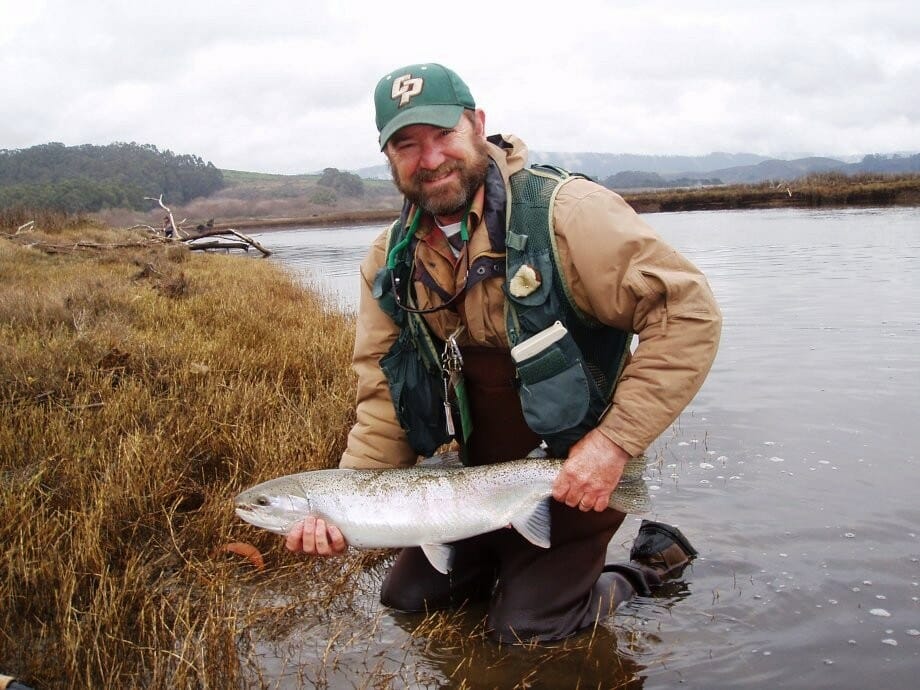By Brian Johnson
It’s been a busy and amazingly productive year for Trout Unlimited in California. With the help of our 10,000 California members and our dozens of agency and project partners, we reached major milestones on many of ou
r highest priority initiatives. All of these highlight TU’s successful formula for protecting and restoring trout and salmon: a reliance on science, partnerships, and pragmatic solutions that benefit both people and the environment.
In 2016 we took a “big step forward on the road to redemption for the Klamath River.” We kept or returned more than 100 million gallons of water in rivers and streams through partnerships with ranchers, farmers, and landowners. We restored habitat in dozens of miles of steelhead and salmon streams. We kept some 8,000 cubic yards of sediment from old roads out of prime coho and steelhead habitat. We removed multiple barriers to fish passage from San
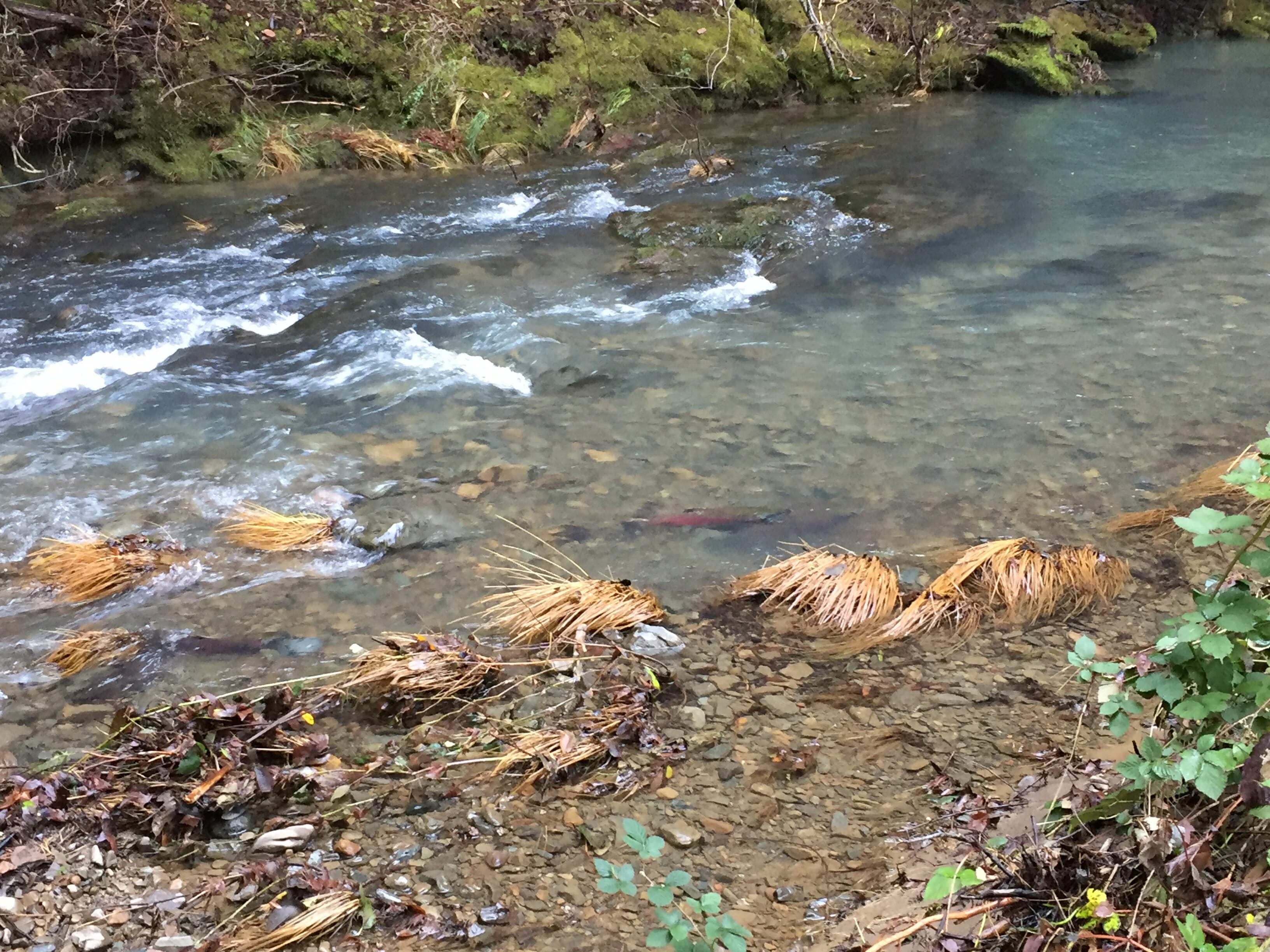 alt=”” title=”” />Luis Obispo to Arcata, including the highest priority dam in the Russian River watershed.
alt=”” title=”” />Luis Obispo to Arcata, including the highest priority dam in the Russian River watershed.
(L) Coho salmon spawning in Mill Creek upstream of the fish passage project site, Dec. 2016
We had a hand in passage of new laws and policy that will improve use and sharing of water data so that we can make better water management decisions and restore habitats degraded by illegal marijuana cultivation. We produced two videos of our coastal streamflows work, and created a new Vimeo channel to house them. We improved fish habitat in blue ribbon trout streams such as the Little Truckee and Truckee Rivers, and advanced native trout restoration efforts for Eagle Lake rainbow trout, Lahontan cutthroat, Kern Plateau golden trout, and Goose Lake redband trout. We represented anglers and fish in the complex process of revising Forest Management Plans for the Sierra, Sequoia, and Inyo national forests; this year, the Forest Service released a Draft Environmental Impact Statement for these plans which reflects some of our key priorities for conservation of habitat and fishing opportunity.
Our Wild Steelhead Initiative was a key voice in support of the new Wild & Heritage Trout Water designation for the South Fork Smith River, and helped convert a golf course to public park land on the Carmel River, retiring the water right along the way. We helped ensure that the State Water Board’s process for updating water quality standards and objectives for the lower San Joaquin, Merced, Tuolumne, and Stanislaus Rivers considers a balanced outcome that provides enough water for salmon and steelhead at the most critical times.
Klamath River
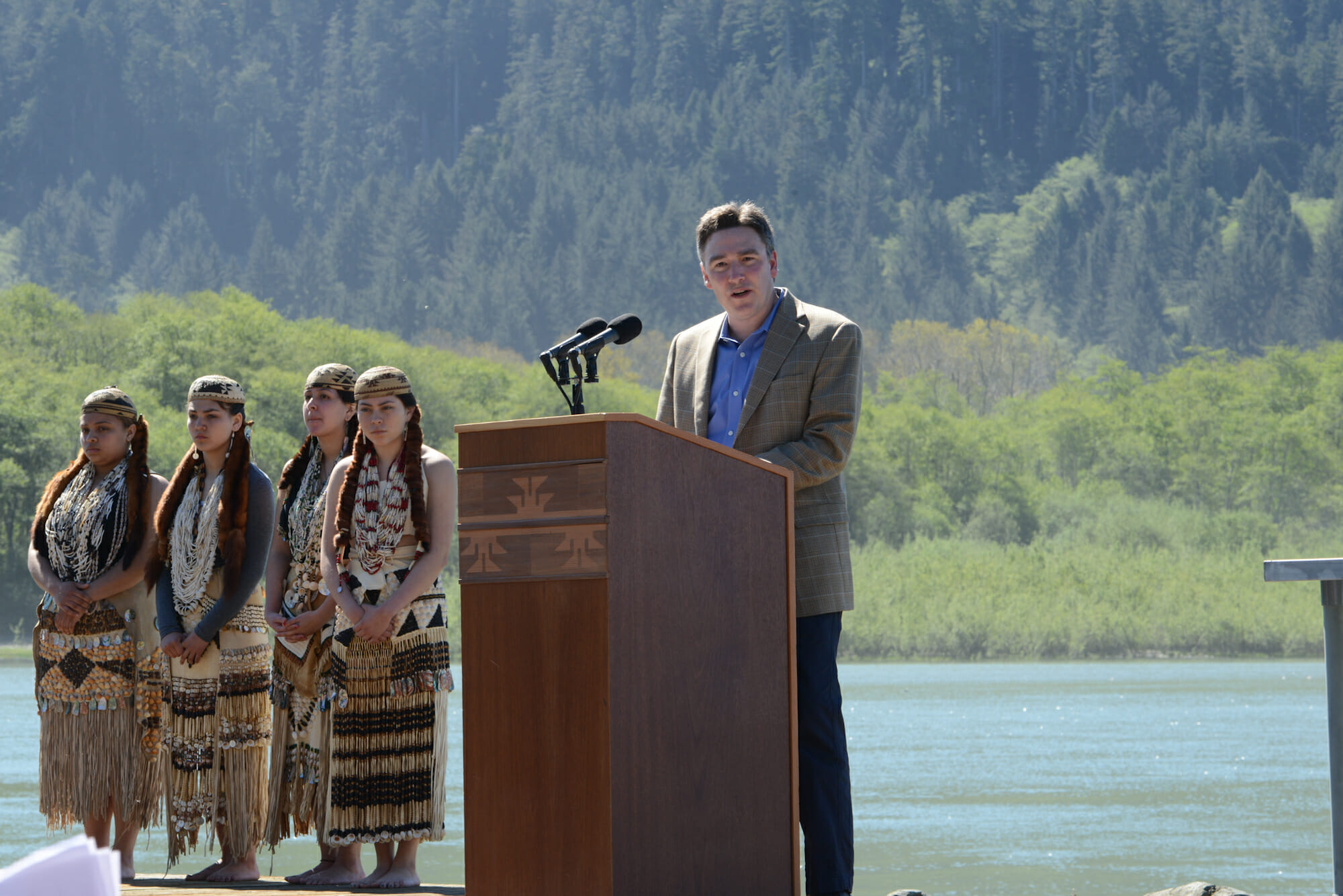 alt=”” title=”” />(R) Brian Johnson speaks at the KHSA signing ceremony
alt=”” title=”” />(R) Brian Johnson speaks at the KHSA signing ceremony
TU played a lead role in negotiating the revised Klamath Hydropower Settlement Agreement, signed in April. The revised KHSA provides for removal of four dams below Klamath Lake starting in 2020, and restoration of passage for salmon and steelhead to more than 400 miles of historic spawning and rearing habitat. TU’s California Director, Brian Johnson, spoke at the KHSA signing ceremony along with the Secretary of the Interior and governors of Oregon and California.
In the upper Klamath Basin, TU’s Klamath Falls staff (formerly the Klamath Basin Rangeland Trust) continued our systematic efforts to restore historic stream channels to facilitate fish passage, expand fish habitat, and acquire permanent instream water rights. In partnership with the USFWS Klamath Falls Partners Program and US Forest Service, we completed reconstruction of the lower two miles of Deming Creek, and permanently dedicated 6.4 cubic feet per second of water to instream flow. Deming Creek had been levied and diverted entirely for irrigation for 120 years. This project allows ESA listed bull trout and native redband trout to migrate between the Sprague River and high quality headwater habitat; we saw an immediate response from native fish, with increases in both abundance and miles of occupied stream.
On the North Fork Sprague River, TU is collaborating with ranchers and landowners to pipe four miles of mainline irrigation canals to conserve at least 20cfs of high quality water which will be permanently protected as instream flow. This project is an outcome of TU’s partnership with The Nature Conservancy and the Klamath Watershed Partnership, which secured a $7.2M grant from the Natural Resource Conservation Service to improve water quality and quantity in the Upper Klamath Basin. TU administers this grant, which benefits resident native fish and helps prepare the watershed for anadromous fish once the dams are removed on the lower river.
Wild Steelhead Initiative
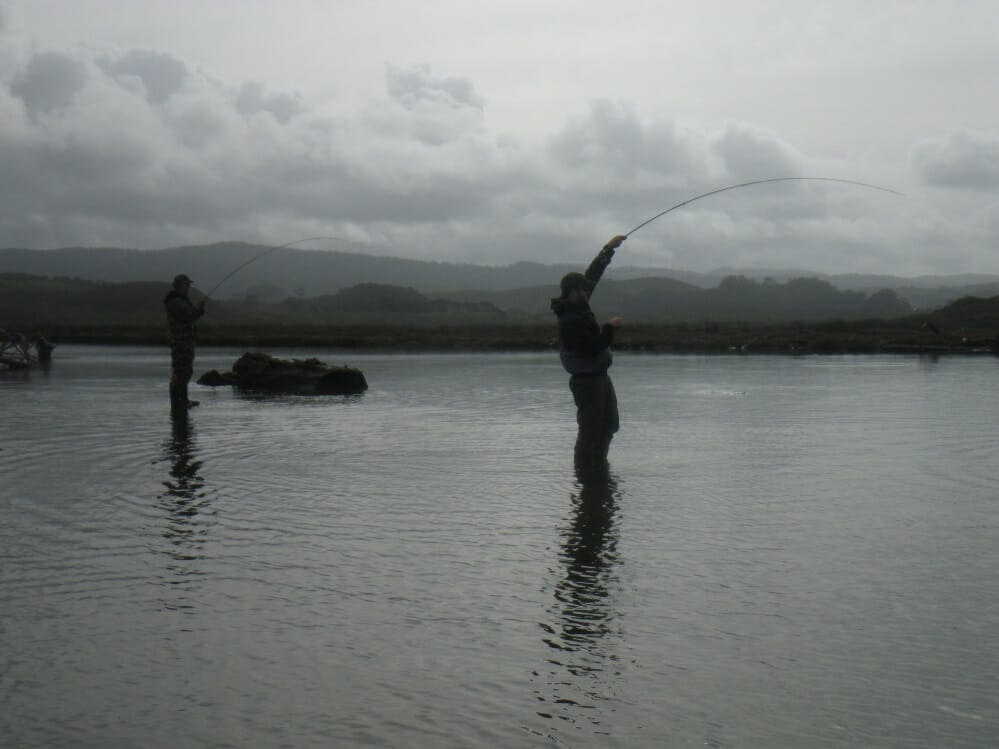 alt=”” title=”” />(R) Getting bent on Pescadero Creek
alt=”” title=”” />(R) Getting bent on Pescadero Creek
In 2016 TU mobilized anglers to protect the NF Smith River headwaters from proposed hard-rock mining and to designate much of the SF Smith as a CA Wild & Heritage Trout Water. Our efforts generated 220 letters from anglers in support of the SF Smith designation, which the CA Fish & Game Commission approved in October. Our North Coast office restored 21 miles of steelhead habitat through large wood installation and road repair and stormproofing. We continued to advocate for solutions to habitat challenges in Pescadero Creek, perhaps the best remianing wild steelhead stream south of San Francisco. We returned almost 98 million gallons of water per year to the lower Carmel River through our work with the Trust for Public Land and the Santa Lucia Conservancy to covert a 36-hole golf course to regional park land.
Legislation & Policy
TU’s work in Sacramento to improve access to and use of water management data and to deal with widespread habitat degradation associated with illegal marijuana cultivation garnered solid “wins” over the past year. A.B. 1755, the Open and Transparent Water Data Act, requires the state to bring together water and ecological data from different agencies into an integrated platform that will help us share information and make better decisions about how to manage our limited water supplies. Proposition 64, passed in November, sets aside a significant pot of funding for enforcement of water law and restoration of habitat damaged by illegal marijuana cultivation.
North Coast Coho Project
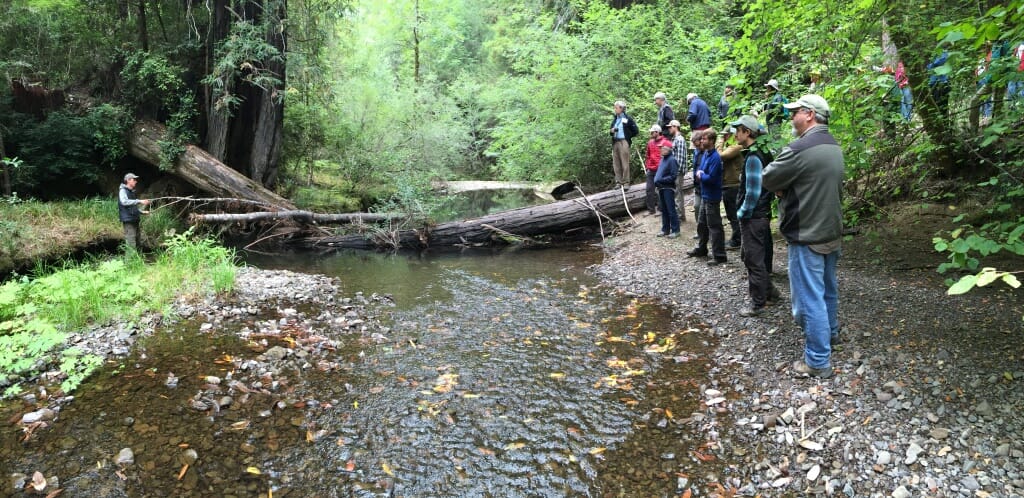 alt=”” title=”” />
alt=”” title=”” />
TU’s North Coast Coho Project is currently working on 25 active projects within the South Fork Eel, Van Duzen, Navarro, Big, Noyo, and Ten Mile rivers as well as Pudding
Creek and Usal Creek. In 2016 the program advanced or completed eight habitat restoration and fish passage projects, which added 317 pieces of large wood structure to 149 sites along 5.16 miles of stream, as well as three projects which treated 4.53 miles of old logging roads to prevent some 7,712 cubic yards of sediment from choking prime coho and steelhead habitat. These results translated into the following early-season salmon and steelhead returns: 207 coho to Pudding Creek (66 adult males and 44 adult females), and 197 coho to the Noyo River (62 adult male and 33 adult female). The NCCP capped off the year by raising more than $2.8 million for sixteen new restoration projects.
Central Valley salmon and steelhead recovery
Years of effort by TU and other fish conservation and angler advocacy groups were reflected in the State Water Board’s release in November of a proposal to boost flow standards for the lower San Joaquin River and its primary tributaries. Increasing the amount of water reserved for fish and water quality in the Bay-Delta to a modest 50 percent of natural flow would be “the single best action that can be taken” to restore imperiled salmon and steelhead runs in the Sacramento and San Joaquin River watersheds. Ed. Note: This process is at a critical stage as you read this—anglers are encouraged to comment in support of higher flow standards. Please tell the water board to adopt new flow standards that will have a real chance to help struggling Central Valley salmon and steelhead runs, and remind the board that the scientific consensus is more than 50% of natural flows are likely required to provide significant benefit for fish. Send comments via email to: Clerk to the Board at commentletters@waterboards.ca.gov . Indicate in the subject line: “Comment Letter – 2016 Bay-Delta Plan Amendment & SED.”
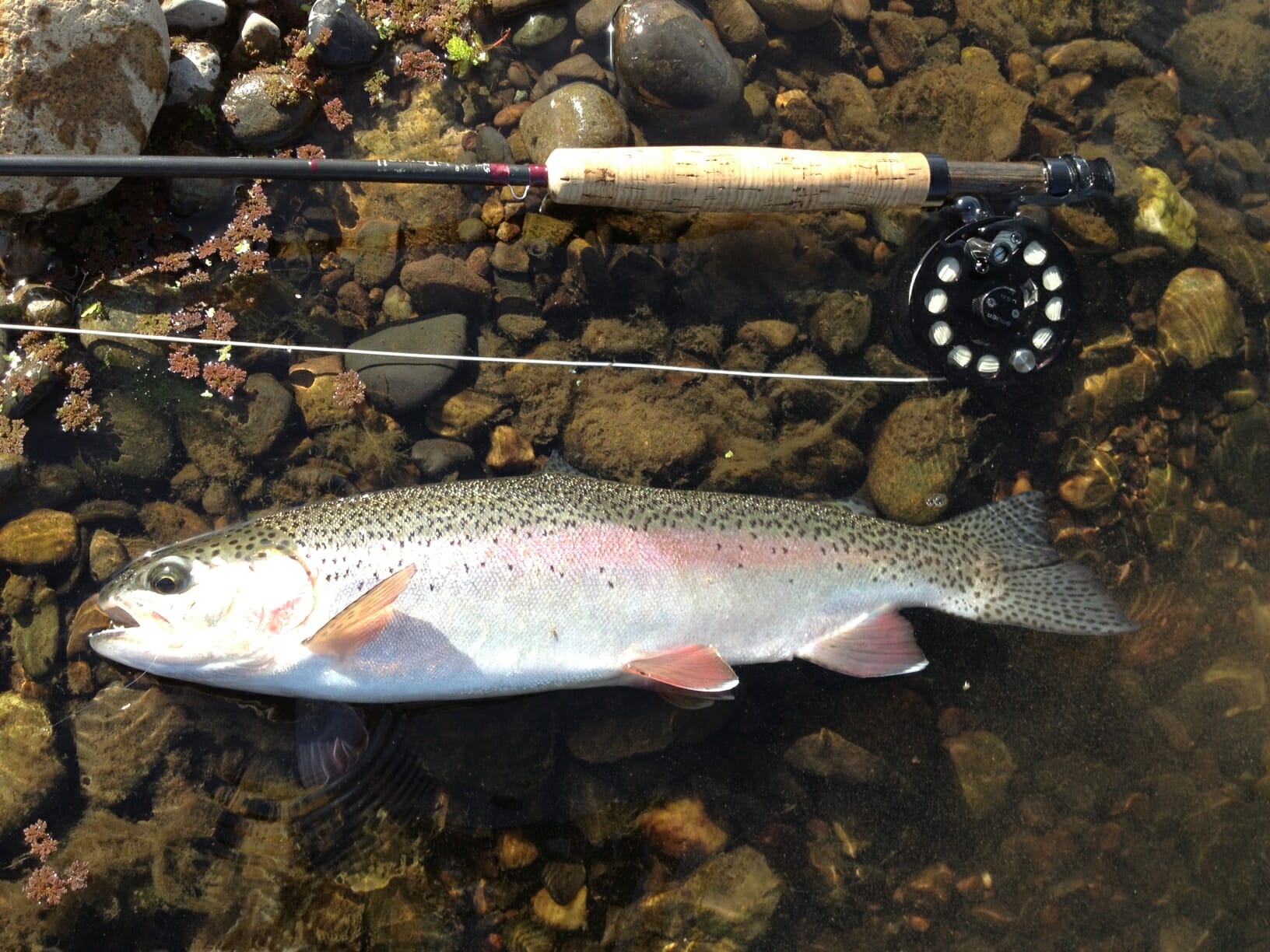 alt=”” title=”” />(R) “Half-pounder” steelhead, Merced River
alt=”” title=”” />(R) “Half-pounder” steelhead, Merced River
The Nevada Irrigation District has proposed a new dam on a free-flowing stretch of the Bear River. Centennial Dam has the potential to impact salmon, steelhead and sturgeon by altering the hydrologic and water quality conditions in the Bear, Feather, and lower Sacramento Rivers and the Sacramento-San Joaquin Delta. TU is leading the effort to ensure that environmental, legal, and public interest issues associated with this dam are fully addressed, and was lead author on formal comments on the document that initiates the environmental review process as well as a water rights protest to the State Water Board requesting that water rights application for the proposed dam be denied.
TU participates in several regulatory and collaborative processes in the Yuba River watershed, with the aim of recovering self-sustaining runs of native Chinook salmon and steelhead. For several years, we have advocated for a process that would establish clear, science-based goals and objectives, and a detailed vision for recovery of anadromous fish, for the Yuba. Clear goals and objectives will better inform all of the work being done or contemplated in this watershed to restore salmon and steelhead. This process was finally initiated in April 2016 and has the support of agencies, water users and conservation groups.
Coastal Streamflows and Fish Passage
 alt=”” title=”” />(L) Mill Creek dam fish passage project site, post-construction
alt=”” title=”” />(L) Mill Creek dam fish passage project site, post-construction
TU completed multiple projects in 2016 that benefit coastal coho salmon and steelhead in California. On Mill Creek, a key tributary for coho salmon and steelhead in the Russian River system, we completed the Mill Creek Dam Fish Passage Project, which dramatically improves fish access to 11.2 miles of intact spawning and cold-water rearing habitat for all age classes. This project is one of the highest priority actions under the federal recovery plan for coho in this watershed, and coho have already been documented spawning upstream of the project site. For more information, see this write-up.
On Pescadero Creek, we kept 14 million gallons of water each summer in the creek through our partnership with Bianchi Flowers farm. On Little Arthur Creek, in the headwaters of the Pajaro River, we completed two residential tank projects, with four more under way for a total of 210,000 gallons of off-channel storage slated for completion by January 2017—this means five residences will no longer divert water from the creek during the dry season, conserving habitat for juvenile steelhead.
On San Gregorio Creek, we completed Phases I and II of a project which upgrades the irrigation infrastructure of Repetto Farms to increase water use efficiency and reduce the rate of creek diversion. As a result, Repetto Farms has been able to reduce its rate of diversion during summer months from approximately 250 gallons per minute (gpm) to approximately 70gpm, and the storage pond has been expanded from 5.3 acre-feet to 19.4 acre-feet to allow the farm to forbear diversions entirely during the period from August 1 to October 31.
In March 2016, we published A Practitioner’s Guide to Instream Flow Transactions in California – a cooperative effort between TU, American Rivers, The Nature Conservancy, Scott River Water Trust, and Alford Environmental. This widely praised, one-of-a-kind resource helps willing water rights holders understand their options for keeping water instream, and briefly describes some of the most common methods for restoring flow for environmental purposes, and discusses in detail how to navigate the process of completing an instream flow dedication by changing a water right, as permitted by Water Code Section 1707. The Guide—and a companion video—are available at www.calinstreamguide.org.
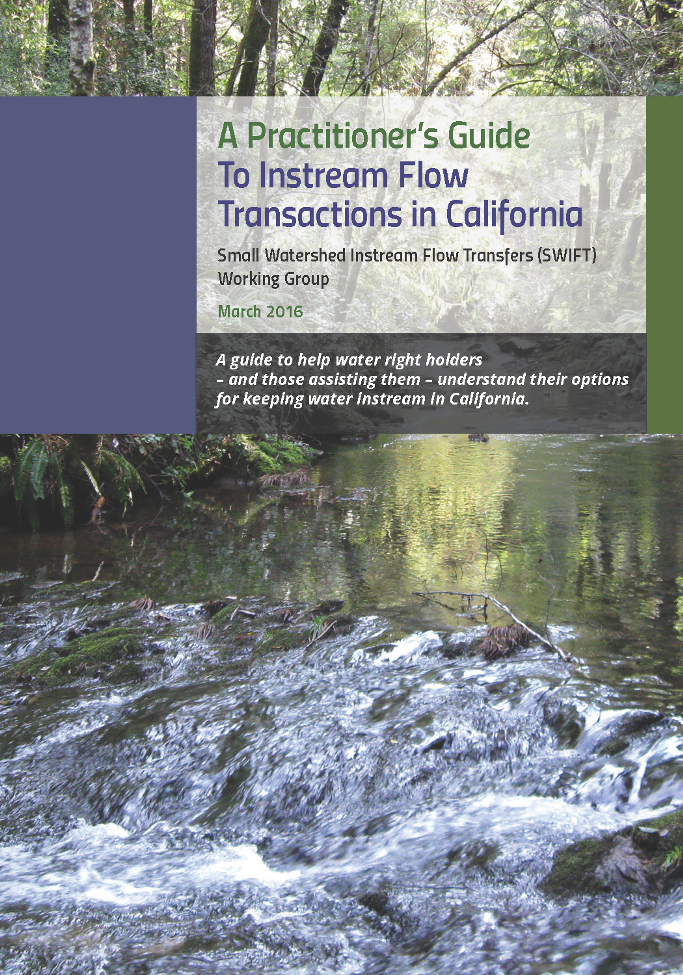 alt=”” title=”” />(R) SWIFT guide to instream flow transactions
alt=”” title=”” />(R) SWIFT guide to instream flow transactions
Conservation hydrology utilizes using scientific methods to improve understanding of natural streamflow regimes, how flora and fauna have evolved in relationship to these regimes, and how water management practices can impact this relationship. The goal is to demonstrate that alternative water practices and technologies can augment water security for residential and agricultural use while reducing adverse impacts to streams and aquatic life. Over the past year our Conservation Hydrology team (one of the happy outcomes of our partnership with the former CEMAR (Center for Ecosystem Monitoring and Restoration)) played a major role in developing the Navarro River Watershed Plan for Streamflow Optimization and Enhancement with our partners at TNC; completed a study in the Napa River watershed characterizing flow conditions and the impacts on streamflow of surface water diversions; and worked with fish biologists at the UC Cooperative Extension, as part of the Russian River Coho Partnership, to identify streamflow thresholds for coho salmon and steelhead survival in project tributary watersheds.
Science
TU’s Science team worked around the state in 2016 to support projects and initiatives related to native trout restoration, wild steelhead and salmon recovery, habitat restoration, and fisheries management. Led by California Science Director Rene Henery, our Science staff worked on issues such as floodplain restoration, the San Joaquin River Restoration Program, a Steelhead Carrying capacity model for the Yuba River, and a strategy for passage
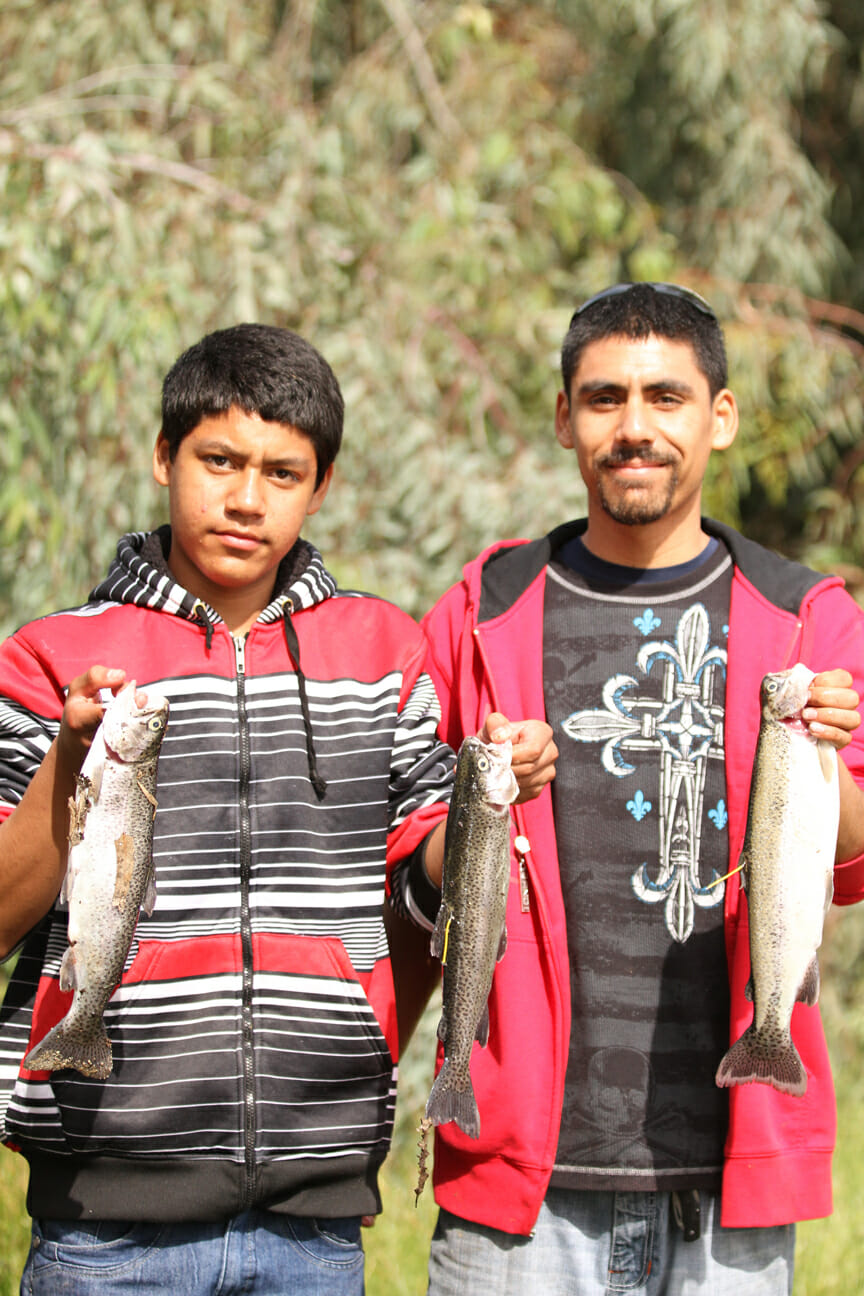 alt=”” title=”” />remediation in the Tahoe National Forest and upper Yuba River watershed, to name but a few. Henery also played a lead role in a growing campaign to make water management in California better reflect the state’s diversity, blogging on this issue, and making a presentation on it (“Why the Environment Needs Diversity and Diversity Needs the Environment”) to the Environmental Grantmakers Association.
alt=”” title=”” />remediation in the Tahoe National Forest and upper Yuba River watershed, to name but a few. Henery also played a lead role in a growing campaign to make water management in California better reflect the state’s diversity, blogging on this issue, and making a presentation on it (“Why the Environment Needs Diversity and Diversity Needs the Environment”) to the Environmental Grantmakers Association.
Working with CalTrout and American Rivers, in 2016 TU established a new collaboration—the Central Valley Salmon Habitat Partnership— dedicated to recovering salmon habitat in the Central Valley. This partnership will include state and federal agencies, conservation groups, commercial and sport fishing interests, and water contractors. The Partnership’s charter is the final stages of revision and a formal signing ceremony is planned for early 2017.
Also in 2016, TU’s participation in a Science Evaluation Panel (SEP) led to publication of a document, Conservation Planning Foundation for Restoring Chinook Salmon and Steelhead in the Stanislaus River—this two-year, 400 page product specifies biological and habitat objectives for salmon recovery in the Stanislaus and makes the population doubling goals of the Central Valley Project Improvement Act actionable by setting a bar for the physical conditions necessary to achieve them. This effort, which aligns with the federal recovery plan for Central Valley salmon, is the first of its kind in California and offers a model for coordinated salmon conservation and recovery efforts. The SEP is now actively working on applying this model to the Tuolumne, Merced and lower San Joaquin Rivers.
Public Lands
This year, TU’s Public Lands program continued to make fishing better on some of California’s best trout streams and initiated exciting new conservation projects in key watersheds across California. We started new fish and habitat assessment projects on the Modoc, Lassen, Tahoe, Inyo, Sequoia and Angeles national forests—our expertise in pre and post project monitoring to evaluate species response to restoration
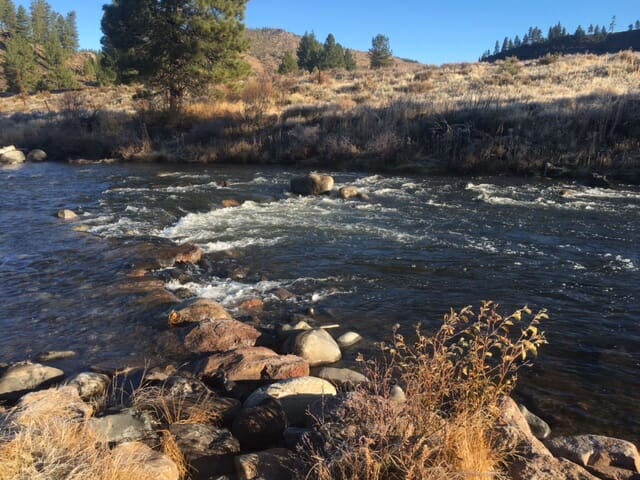 alt=”” title=”” />efforts has made us a leader in this work in the Golden State.
alt=”” title=”” />efforts has made us a leader in this work in the Golden State.
(L) Habitat improvement project, Truckee River
We completed a large habitat restoration project on the Truckee River and have similar projects planned for construction in 2017 on the Kern River, Pine Creek (Eagle Lake), Squaw Creek, and on another reach of the Truckee River. And after years of research, education and organizing to better protect headwaters habitat and fishing opportunity on hundreds of thousands of acres of public lands in Trinity, Humboldt, and Mendocino counties, we are close to getting federal legislation introduced that will permanently protect some of the last, best salmon and steelhead country along the North Coast.
Brian Johnson is director of TU’s California and Klamath River programs.



